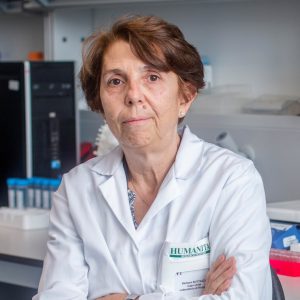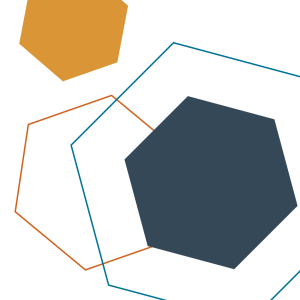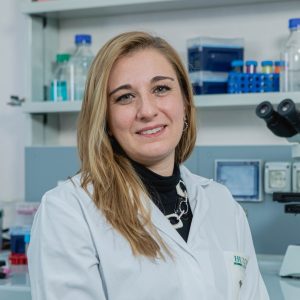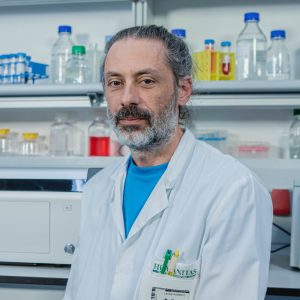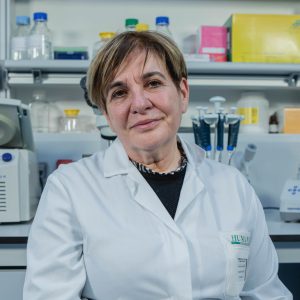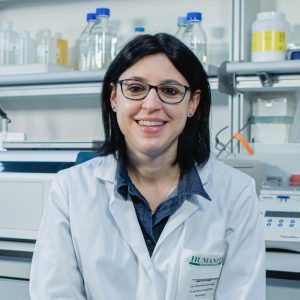Research Group
Mantovani Group
Cellular and Humoral Innate Immunity Lab
Mantovani’s scientific research is focused on the molecular mechanisms of innate immunity and inflammation, field in which he formulated internationally recognized paradigms and identified new molecules, contributing to the renaissance of the inflammation-cancer connection.
The challenge
We know that macrophages have the potential to kill cancer cells, to produce vascular damage – that can further drive tumor necrosis – and to activate other innate and adaptive anti-tumor mechanisms. However, in many types of cancer, researchers have shown that macrophages can also contribute to cancer progression and metastasis, either by directly supporting cancer cells and nurturing the tumor microenvironment (TEM), or by suppressing the immune response. This double identity of macrophages depends on the innate humoral molecular cues collected by these cells in the TEM: by studying these cues we can hope to leverage them to fight cancer and to better control immune responses to insults and infections.
Main research areas
Tumor-associated macrophages
Studying macrophages infiltrating mouse metastatic tumors and human tumors, Prof. Mantovani was one of the first scientists to demonstrate the existence of tumor-associated macrophages (TAM, an acronym now generally used and coined by him in the 70’s) linking inflammation and cancer (Lancet, 2001). He also led the first proof of principle that targeting tumor promoting macrophages has therapeutic value in humans (Cancer Cell, 2013). Mantovani’s group and demonstrated pentraxin PTX3 role as an extrinsic oncosuppressor in murine and human tumors, regulating the complement and macrophage-driven tumor-promoting inflammation (Cell, 2015). More recently, Mantovani contributed to the discovery of a novel pathway of anti-tumor immunity involving neutrophils, macrophages and unconventional, double negative T cells (Cell, 2019).
Chemokines
This interest in the role of innate immunity in cancer has developed into the dissection of what we now call cytokines and molecular pathways of innate immunity. For instance, the view that macrophages promote cancer allowed scientists, in the early ‘80s, to search for macrophage attractants (now called chemokines) produced by cancer cells: Mantovani’s group described the role in TAM recruitment of a unique monocyte attractant, Monocyte Chemotactic Protein-1 (CCL2), as tumor-derived chemotactic factor (Science, 1983). He discovered that IL-6 induces chemokine production in endothelial cells, contributing to leukocyte recruitment on-site, a key component of the relationship between inflammation and cancer (Immunity, 1997). During his career, Mantovani contributed to the characterization of chemokines role in pathophysiology, including dendritic cell and polarized T cell migration (see Nature Reviews Immunology, 2006).
IL-1 and Toll-like receptors
Mantovani’s group identification of the type II IL-1 receptor as a decoy receptor, a novel concept in biology, represented a paradigm shift after the original definition of the concept of “receptor” by Langley in the 1930s (Science, 1993). Decoy receptors are now recognized as a general, evolutionary conserved strategy to tune cytokines, chemokines and growth factors. Mantovai’s lab also discovered that MYD88 is the adaptor molecule downstream of mammalian TLR, a finding with broad impact (Muzio et al, JEM) and performed the cloning and characterization of IL-1R8, a negative regulator of IL-1 receptor and TLR signaling (Immunity, 2013), which was followed by the demonstrating that in NK cells IL-1R8 serves as a checkpoint: its blocking unleashes resistance to carcinogenesis and metastasis at selected anatomical sites (Nature, 2017).
Humoral innate immunity
Mantovani did the structural and functional characterization, as well as cloning, of the first long pentraxin PTX3 as an IL-1 inducible gene (Nature, 2002) demonstrating its role as a paradigm for humoral innate immunity. The molecule is now in the process of diagnostic and therapeutic translation to the clinic (NEJM, 2014). As a regulator of macrophage-driven tumor promoting inflammation (Cell, 2015), PTX3 is a bona fide cancer gene, silenced in selected human tumors such as colorectal cancer, a finding now independently confirmed in large patients’ cohorts. PTX3 emerged also as a strong prognostic biomarker in COVID-19 (Nature Immunology, 2021).
Selected publications
Humoral Innate Immunity and Acute-Phase Proteins.
Recognition and inhibition of SARS-CoV-2 by humoral innate immunity pattern recognition molecules.
Macrophage expression and prognostic significance of the long pentraxin PTX3 in COVID-19.
Macrophage morphology correlates with single-cell diversity and prognosis in colorectal liver metastasis.
The macrophage tetraspan MS4A4A enhances dectin-1-dependent NK cell-mediated resistance to metastasis.
Neutrophils Driving Unconventional T Cells Mediate Resistance against Murine Sarcomas and Selected Human Tumors.
IL-1R8 is a checkpoint in NK cells regulating anti-tumour and anti-viral activity.
An acidic microenvironment sets the humoral pattern recognition molecule PTX3 in a tissue repair mode.
PTX3 is an extrinsic oncosuppressor regulating complement-dependent inflammation in cancer.
The humoral pattern recognition molecule PTX3 is a key component of innate immunity against urinary tract infection.
Genetic PTX3 deficiency and aspergillosis in stem-cell transplantation.
Role of macrophage targeting in the antitumor activity of trabectedin.
Regulation of leukocyte recruitment by the long pentraxin PTX3.
Role of the chemokine decoy receptor D6 in balancing inflammation, immune activation, and antimicrobial resistance in Mycobacterium tuberculosis infection.
Tir8/Sigirr prevents murine lupus by suppressing the immunostimulatory effects of lupus autoantigens.
The humoral pattern recognition receptor PTX3 is stored in neutrophil granules and localizes in extracellular traps.
Protection against inflammation- and autoantibody-caused fetal loss by the chemokine decoy receptor D6.
A distinct and unique transcriptional program expressed by tumor-associated macrophages (defective NF-kappaB and enhanced IRF-3/STAT1 activation).
Induction of a proinflammatory program in normal human thyrocytes by the RET/PTC1 oncogene.
Complexity and complementarity of outer membrane protein A recognition by cellular and humoral innate immunity receptors.
Noncompetitive allosteric inhibitors of the inflammatory chemokine receptors CXCR1 and CXCR2: prevention of reperfusion injury.
Intestinal inflammation in mice deficient in Tir8, an inhibitory member of the IL-1 receptor family.
Regulation of the chemokine receptor CXCR4 by hypoxia.
Specific recruitment of antigen-presenting cells by chemerin, a novel processed ligand from human inflammatory fluids.
Non-redundant role of the long pentraxin PTX3 in anti-fungal innate immune response.
Fractalkine (CX3CL1) as an amplification circuit of polarized Th1 responses.
Uncoupling of inflammatory chemokine receptors by IL-10: generation of functional decoys.
Central role for G protein-coupled phosphoinositide 3-kinase gamma in inflammation.
The human toll signaling pathway: divergence of nuclear factor kappaB and JNK/SAPK activation upstream of tumor necrosis factor receptor-associated factor 6 (TRAF6).
Interleukin 10 increases CCR5 expression and HIV infection in human monocytes.
Differential expression of chemokine receptors and chemotactic responsiveness of type 1 T helper cells (Th1s) and Th2s.
Human macrophage-derived chemokine (MDC), a novel chemoattractant for monocytes, monocyte-derived dendritic cells, and natural killer cells.
Bacterial lipopolysaccharide rapidly inhibits expression of C-C chemokine receptors in human monocytes.
Role of IL-6 and its soluble receptor in induction of chemokines and leukocyte recruitment.
Inhibition of interleukin-1 responsiveness by type II receptor gene transfer: a surface “receptor” with anti-interleukin-1 function.
Cloning and characterization of a new isoform of the interleukin 1 receptor antagonist.
Chemoattractants induce rapid release of the interleukin 1 type II decoy receptor in human polymorphonuclear cells.
Interleukin-1 type II receptor: a decoy target for IL-1 that is regulated by IL-4.
Granulocyte- and granulocyte-macrophage-colony stimulating factors induce human endothelial cells to migrate and proliferate.
Prostacyclin synthesis induced in vascular cells by interleukin-1.
Regulation of the macrophage content of neoplasms by chemoattractants.
Effects on in vitro tumor growth of murine macrophages isolated from sarcoma lines differing in immunogenicity and metastasizing capacity.
Group members
